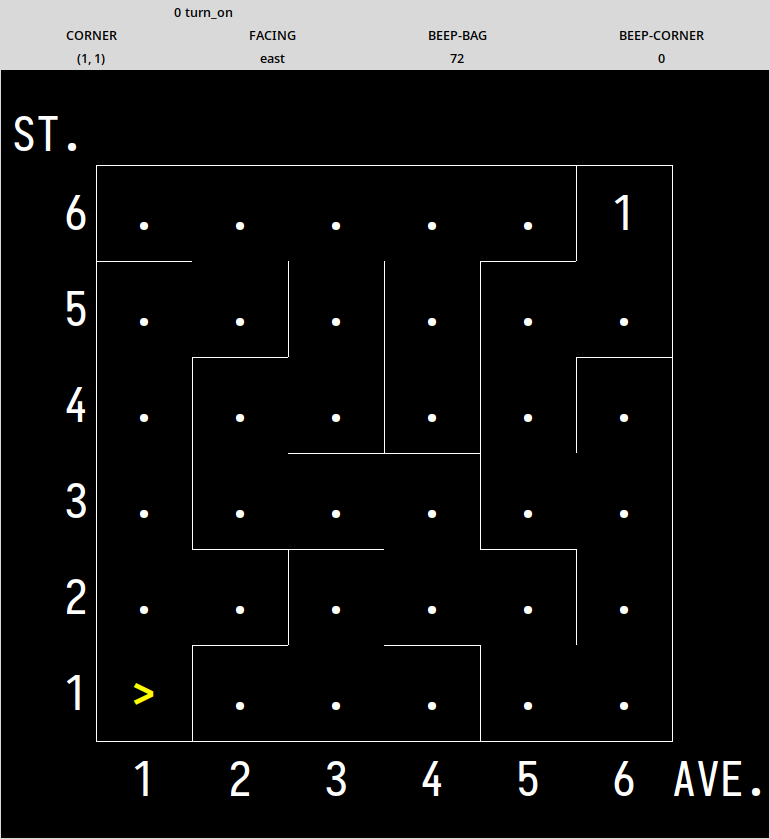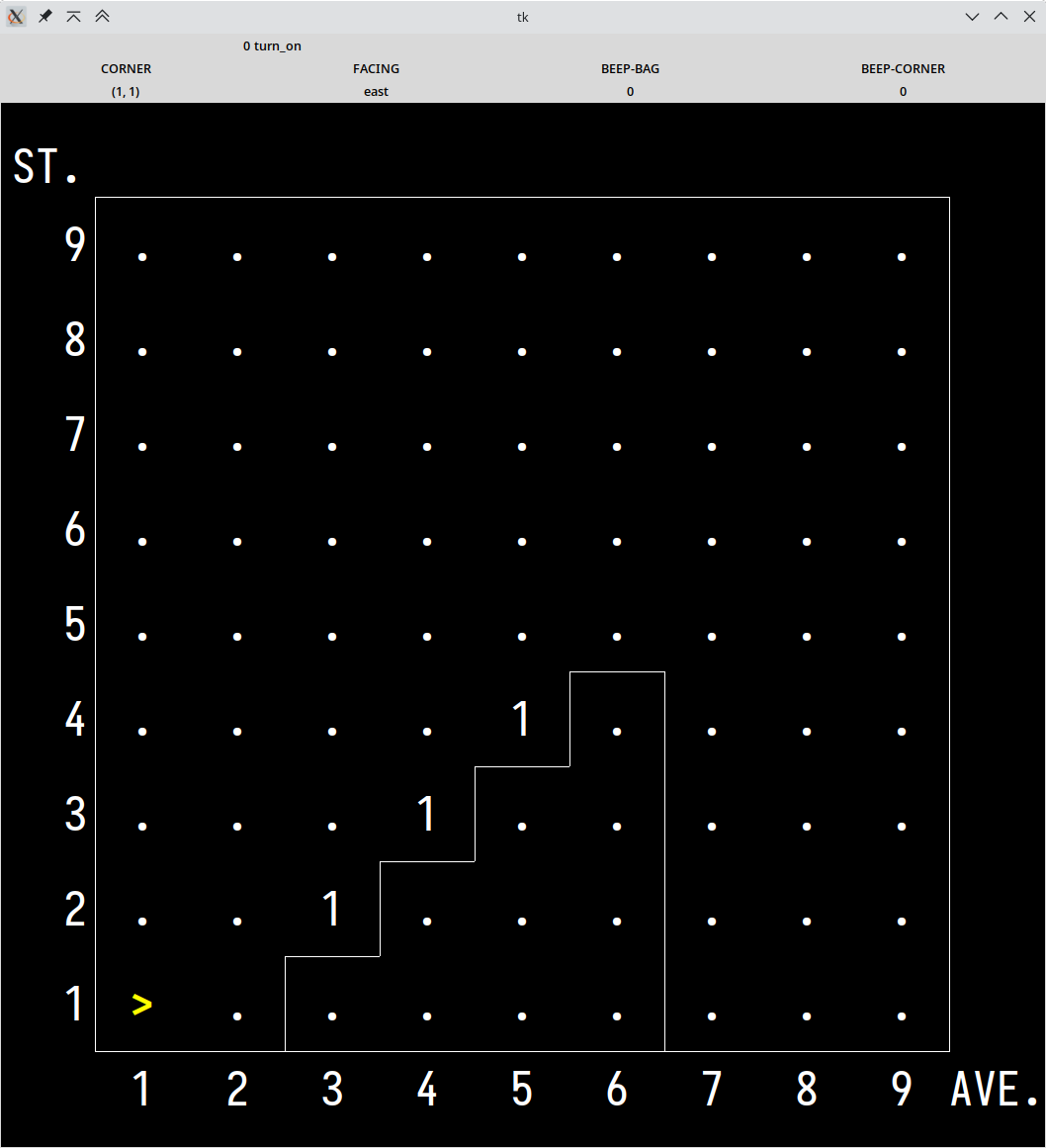Recursion and backtracking with Robot Karel
Introduction
In this exercise we will be working with a Robot Karel and with a »very« limited resources. The point of this exercise is to show how powerful recursion and backtracking can be even without anything else at your hand.
Your environment and problem description
Environment
You are given a robot that is present in a maze and is looking for an exit. Maze consists of different walls and exit is marked with a single so-called “beeper”.
Walking into a wall results in a permanent damage of the robot.
Interface
You can control the robot using the following interface:
- actions — you can use them to change the current state of the robot and its
surroundings
robot.step()— moves robot one step furtherrobot.turn_left()— turns robot 90-degrees counter-clockwise- notice that you are not given
turn_rightorturn_around, but feel free to implement them yourself
- notice that you are not given
robot.pick_beeper()and opposite operationrobot.put_beeper()— that allows you to either pick or put “beeper” from or onto the current position
- queries — you can use them to check the current state of the robot and its
surroundings
robot.beepers_present()— to check if there are any beepers at the robot's current locationrobot.left_is_clear()— to check if you can step to the left- analogically for
frontandright
- analogically for
Helper functions / procedures are allowed. Return values are allowed.
Variables are prohibited!
Problem
Your task is to decide whether there is an exit from the maze or not. You can see an example of a maze here:

Simple problem to get familiar with the robot
If you feel completely lost after the previous description, let me start you off with a simpler problem.
You are standing in front of the stairs, your task is to walk up the stairs.
You can see an example of such map here:

Brainstorm the idea
As a first step write down any ideas and things that you have noticed or came to your mind. Ideally:
- Write down a nested list of the problems
- Write down list of problems that can happen
- Write down anything you consider important to solving the problem
Problem: I want to find out whether the display on smartphone should rotate.
- nested list of problems
- Check if display has been rotated
- Read data from some sensor
- From what sensor
- In what format are the data I have read?
- How do I communicate with the sensor?
- What is the meaning of the data that I got?
- How can I process it?
- Read data from some sensor
- Check if display has been rotated
- any problems that can happen
- What if the sensor doesn't work?
- What if the data doesn't conform to the specification?
- What if my formulas are wrong?
- anything important
- I could probably use gyroscope.
- I should probably look up the datasheet for that module.
- I could write some tests to verify that my computations are correct.
»Rough« pseudocode
As a next step write a mock up of a pseudocode solving the problem, you are allowed to use comments as placeholders for bigger chunks of code.
Those comments are also a very good hints for decomposition and short, but descriptive, commnets (if they are short enough and you decide not to factor them out to separate functions).
The smaller the function is, the easier it is to test it and argue about its correctness.
»Proper« pseudocode
If you are satisfied with the »rough« pseudocode, it's time to convert it into a proper one. Get rid of the uncertain pieces of functionality and replace them with proper pseudocode, i.e. list of the things that should happen in its place.
Library
If you got here, and you actually wrote down the pseudocode, you can try your solution after downloading the sources linked at the beginning. If you download the ZIP-file, you can there:
-
generate_mazes.py- that was used to generate the same maze with beepers in different locations -
karel_tk.py- library which can run Karel given the his world- documentation can be found here
- also requires Tk Python library to be installed (it should be included in majority of Python installations)
-
*.kw- which represent multiple worlds for Karel I have prepared -
skeleton.py- skeleton for your solution, needs to be put in the same directory askarel_tk.pyand takes path to the world as a first argument, example usage:$ python3 skeleton.py stairs.kw- of course, this file can be renamed ;)
Solution
Solution to this problem will be released as a second part, so that you can try it out by yourself without any influence of “example solution”.
If you want to get any feedback, feel free to mail me your solution (including all the steps that lead to your final solution, if you wish to get feedback on those too).